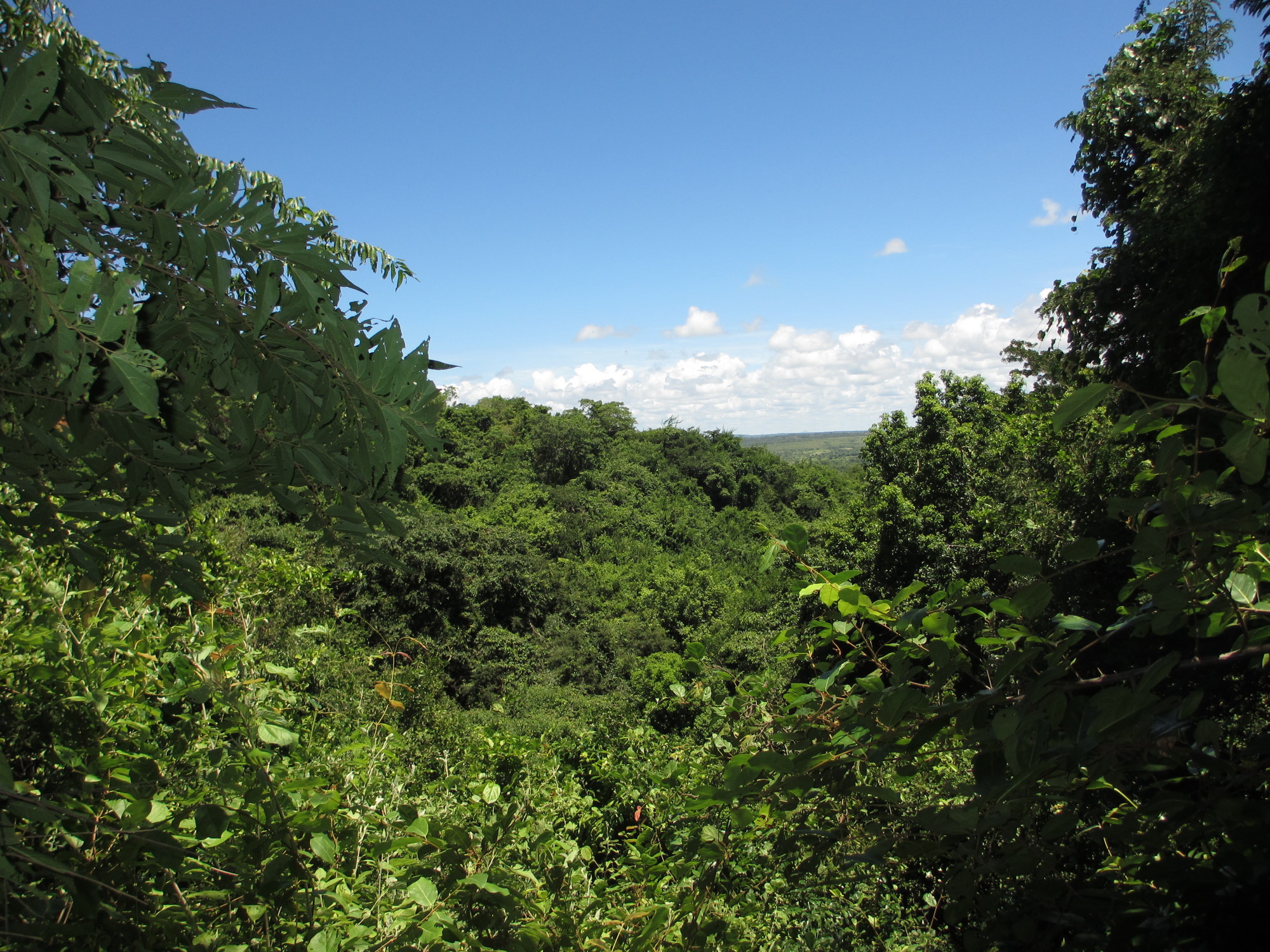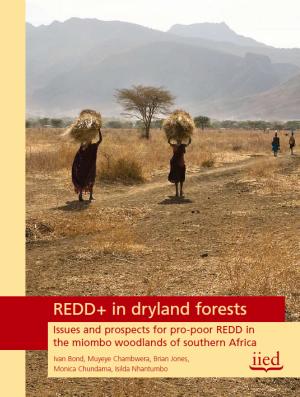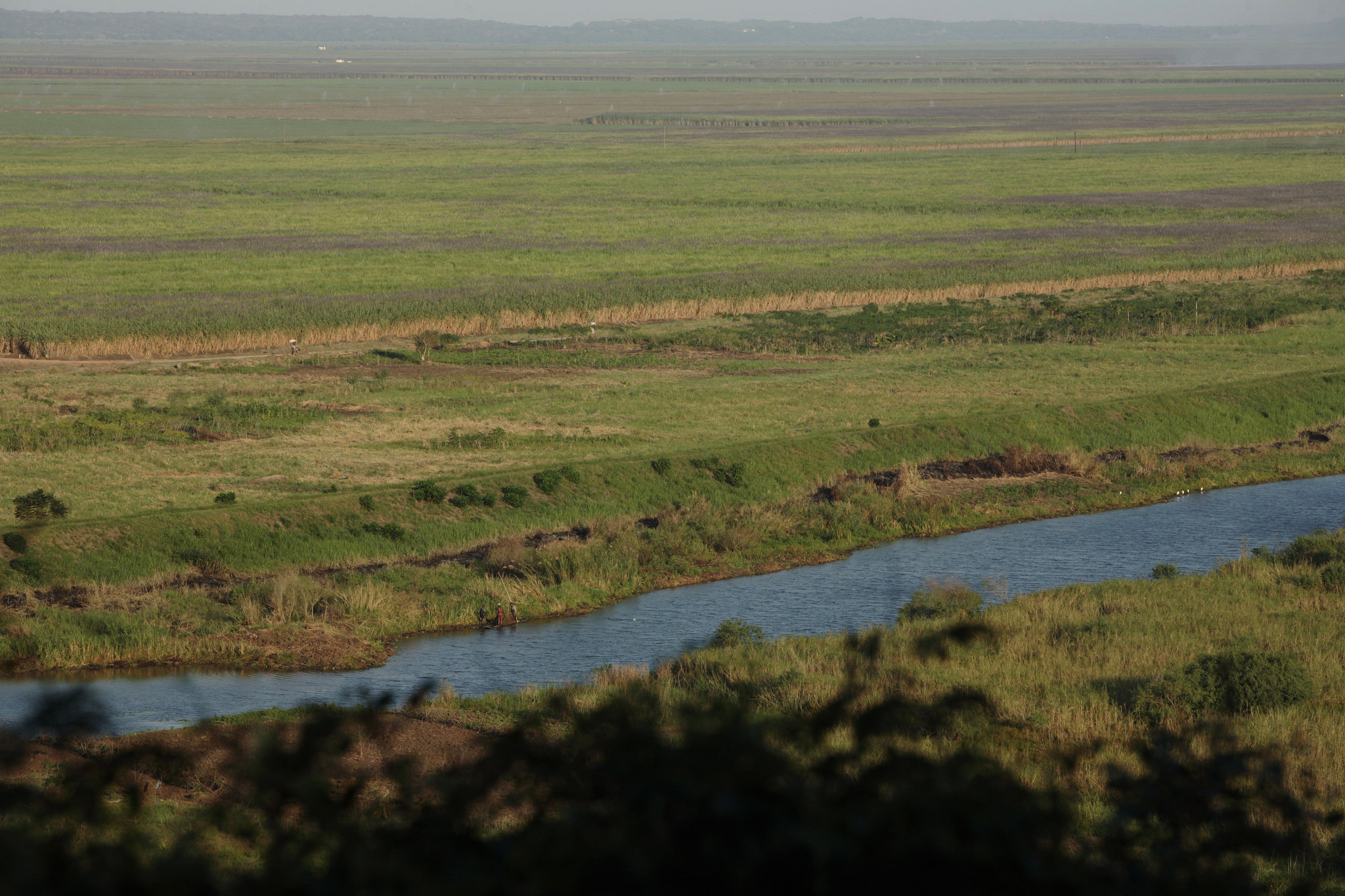Activity page

Upscaling nature-based flood protection in Mozambique’s coastal cities
PROGRAM SUMMARY
The objective of this activity is to support the Government of Mozambique in implementing nature-based solutions for urban flood risk management, particularly in coastal cities. The activity will also leverage the lessons learned in Mozambique to support the future application of similar solutions in the wider Africa region.
CHALLENGE
Many of Africa’s major cities are located in river deltas along the coast. These cities are highly prone to damaging floods due to the combination of climate extremes and rapid urbanization. Mozambique is one of the countries most exposed to coastal and river flooding in Africa. The World Bank has been active in providing emergency recovery after flooding in Mozambique, and is increasingly supporting the Government in preventive disaster risk management operations on the city and regional levels. While traditional infrastructure-based interventions still make up the majority of global financing to improve disaster risk management, the application of nature-based solutions is gaining momentum.
One of the first nature-based urban flood management projects supported by the World Bank is in the coastal city of Beira in Mozambique. To maximize results from such projects, it is important to clarify the exact benefits for urban flood risk management and how such approaches can be best adjusted and scaled up to other cities in Mozambique and other countries in Africa. More generally, nature-based urban flood risk management projects struggle to provide a structured and comprehensive assessment of grey and green infrastructure solutions and produce and communicate evidence on the cost effectiveness of such solutions compared to other priorities.
PROFOR’s activity aims to enhance and upscale the green infrastructure pilot for urban flood risk management to other cities in Mozambique by building on lessons learned in Beira and using guidelines produced under PROFOR’s ongoing Harnessing Forests for Nature-Based Solutions to Disaster Risk Management funded under the DRM and Forestry Global Knowledge Management program.
APPROACH
The activity will conduct the following key tasks and outputs:
1. Compile lessons learned from the green infrastructure pilot in Beira with a view to extend the knowledge base on green infrastructure development for urban flood management purposes in Africa.
2. Assessment of relevant legal, regulatory, and institutional framework in Mozambique to identify gaps in the enabling environment to mainstream nature-based solutions (NBS) into planning and implementation of urban drainage and flood risk management, considering climate change. The expected output will be a policy note providing a set of recommendations to improve the enabling environment.
3. Urban Flood Risk Assessment for one other major delta city in Mozambique that is prone to flooding and erosion (potentially Nacala or Xai-Xai). Outputs from this assessment will include flood risk maps for different climate change and urban growth/expansion scenarios, identification of land-use typology and the potential for nature-based solutions, and a proposal on potential types of nature-based solutions that could be feasibly implemented in the specific setting. A workshop for representatives from national and local government, civil society, academia, and other donors will be conducted to validate the findings and define possible risk reduction strategies.
4. Cost-benefit analysis of different investment scenarios for green and hybrid flood management solutions. Based on the urban flood risk assessment and stakeholder workshop, a range of investment scenarios for green and hybrid solutions for urban flood management will be generated and analyzed in terms of costs and benefits. A final dissemination workshop will be organized in Mozambique to present and discuss findings with key stakeholders from the national and local level.
The abovementioned outputs will utilize and contribute to the comprehensive guidance on nature-based solutions for flood management that the World Bank is currently preparing under the PROFOR-funded program on Disaster Risk Management and Forestry. Activities will also feed into the preparation of new investment lending operations in aiming to improve drainage and resilience of cities across Mozambique.
RESULTS
The activity contributed to reducing the knowledge gap and extending the knowledge base on the implementation of nature-based solutions for urban flood and erosion management.
- The lessons from the report have informed World Bank project teams who are working on green infrastructure in cities facing similar challenges, such as inspiring uptake of NBS in a World Bank investment project in Rwanda.
- The reports proposed several NBS that could be considered to reduce flood and erosion risk in Quelimane and Nacala, providing an initial assessment of their viability and impact that may inform future investment projects.
- These lessons learned have been feeding into the implementation and preparation of WB-financed projects in Mozambique. Specifically, contributed to finetuning remaining activities related to the green urban infrastructure in Beira under the Mozambique Cities and Climate Change Project (P123201), especially with regards to maintenance arrangements, and are informing the design and preparation of additional nature-based interventions in Beira that will be financed under the Cyclone Idai and Kenneth Emergency Recovery and Resilience Project (P171040).
- The risk assessment and cost-benefit analysis show that the implementation of proposed NBS measures would contribute to a significant reduction in flooding risk, be financial and economically viable, and bring additional benefits (ecosystem services, human health, potential job opportunities, etc.).
- The CBAs will inform proposed investments under the Cyclone Idai and Kenneth Emergency Recovery and Resilience Project (P171040).
- The findings allowed decision-makers to understand how potential green and gray solutions compare from effectiveness and cost-benefit perspective. The contributions/feedback from national actors also demonstrated that they now consider green/NBS solutions on an equal footing to gray solutions than before.
- The presentation and discussion of these findings raised awareness for the potential and benefits of NBS with local and national policy-makers in Mozambique, fostering interest in pursuing these solutions to complement or substitute more traditional grey approaches and contributing to building alliances between different actors to work together towards the application of such solutions.
For stories and updates on related activities, follow us on twitter and facebook , or subscribe to our mailing list for regular updates.
Last Updated : 06-16-2024

Share
Related Links
Natural Forest Management: Promoting Sustainable Use in Mozambique
Natural Forest Management: Promoting Sustainable Use in Mozambique (Portuguese)
Assessing Forest Governance in Mozambique
External Related Links
FCPF Mozambique REDD+ Readiness Grant
Mozambique Conservation Areas for Biodiversity and Development Project
Moz Agriculture and Natural Resources Landscape Management Project
Fighting Deforestation in the Miombo Woodlands of Southern Africa
Attachments
NaturalForest Brochure 8.5x11_Port_r5_web.pdf
NaturalForest Brochure 8.5x11 R5_web.pdf
PBrief_miombonetwork_English.pdf
Mozambique Forest Sector Review and Knowledge Management
CHALLENGE
Forests cover over half of the land area in Mozambique, and forest-based activities and industries are an important contributor to the country’s economy and a major source of employment and income in rural areas. But although the forest sector in Mozambique could contribute significantly to GDP and rural incomes, but it is constrained by substantial governance issues, which also indirectly drive forest loss. Challenges include low levels of compliance with environmental and social regulations, as well as widespread illegal logging.
While natural timber offers significant potential for raising incomes and generating jobs at the local level, this will require policy reforms to ensure better control, inspection and management and information systems, as well positive incentives towards sustainable forest management. The Government of Mozambique is committed to addressing forest-related challenges. A new Ministry of Land, Environment and Rural Development (MITADER) has been established, bringing together responsibilities that were previously spread across several ministries, for improved coordination when it comes to cross-sectoral issues.
APPROACH
This activity will support Mozambique’s Forest Review and build critical capacity for forest landscape planning at the national and sub-national levels. This will be achieved through the following steps:
- Produce a financial assessment of forest concessions with several financial scenarios, including options to maximize the financial return of forest concessions and their capacity to contribute to local development. This work will also assess the private sector’s main barriers towards sustainability, including access to finance.
- Carry out a participatory forest governance assessment tool, consisting of indicators that systematically cover the various aspects of what constitutes good forest governance in terms of policy, legal, institutional and regulatory frameworks; planning and decision-making processes; and implementation, enforcement and compliance.
- Apply the Restoration Opportunity Assessment Methodology (ROAM) used by the International Union for the Conservation of Nature (IUCN) and the World Resources Institute (WRI) to identify priority areas for forest restoration, calculate costs and benefits, and consider finance and investment options.
- Organize a regional seminar to improve existing knowledge of the miombo woodlands, which include various types of ecosystems across central and southern Africa, such as tropical grasslands, savannas and shrub lands
RESULTS
In terms of final outputs, the financial assessment of forest concessions provided empirically based, up-to-date information on the financial feasibility of sustainable natural forest management in Mozambique. The study, along with the participatory forest governance assessment, will be useful not only in designing Mozambique’s FIP plan, but also for the government’s review of forest laws and policies.
The ROAM tool was piloted across 10 districts under the Agriculture and Natural Resources Landscape Management Project, and will help orient the investment of about US$ 4 million in restoration-related activities in these areas. Government counterparts played an important role in defining Mozambique’s commitment towards restoring 1 million ha of deforested and degraded area by 2030, as laid out under AFR100. The pilot drew considerable attention to the restoration agenda in Mozambique, providing momentum to related discussions in the country. While gender aspects were considered in the initial planning of the exercise, it is clear that more efforts should be dedicated to this in the future: women accounted for no more than 15 percent of participants in consultations and trainings undertaken within the context of this pilot.
Finally, In July, the Miombo Network convened a meeting on Restoring the Socio-Ecological and Socio-Economic Relationships in the Miombo Woodlands, which created an action plan for the next three years focused on the following themes: drivers of land use change, restoration, adaptation to climate change, socio-ecological relationships and forest governance (see blog for further detail). While recognizing that still a lot has to be done, the conference increased participants’ understanding of the forest sector.
For stories and updates on related activities, follow us on twitter and facebook , or subscribe to our mailing list for regular updates.
Last Updated : 06-16-2024

Preparing for REDD+ in Dryland Forests
CHALLENGE
Approximately 100 million people live in the miombo region which covers 11 countries of eastern and southern Africa. About 75 million of them are poor and rely on woodlands, characterized by poor soils, as a resource and a safety net in times of stress.
Although exploitation of the woodlands for agriculture, timber and energy (fuelwood) has not contributed to widespread poverty alleviation, conservation of the woodlands would have opportunity costs for land managers and users that need to be taken into account. To change the behavior of farmers, payments for avoided deforestation and degradation (REDD+) will have to match or exceed the benefits from other land uses.
APPROACH
Drawing on lessons from two decades of successful community-based natural resource management in the miombo region, as well as cases studies in Namibia, Mozambique and Zambia, the International Institute for Environment and Development (IIED) explored the opportunities for pro-poor REDD+ payments.
PROFOR supported this research, in-country consultations and related workshops led by country experts, to facilitate stakeholders’ awareness of the application of REDD+ payments in the national and regional context and different options for maximizing pro-poor returns and to contribute to to a better understanding of REDD+ in the run-up and aftermath of the UNFCC meeting in Copenhagen in December 2009.
RESULTS
Efforts to reduce deforestation in the miombo region will only be successful if:
1. Rights to land, resources and carbon are clarified and reside with farmers and communities.
2. There are legal and policy frameworks in place that value and reward land uses other than agriculture.
3. Payments made exceed the benefits that would accrue to farmers from
alternative land uses including agriculture; timber and energy (charcoal).
4. Implementation allows communities, local government and supporting
organizations to adapt activities to meet local conditions.
5. Implementation recognizes the potentially severe impacts of climate change on ecosystems agriculture and livelihoods in the region.
6. Underlying governance challenges that exist at all levels are addressed.
For stories and updates on related activities, follow us on twitter and facebook , or subscribe to our mailing list for regular updates.
Author : IIED
Last Updated : 06-16-2024
Land Use Planning for Enhanced Resilience of Landscapes in Madagascar and Mozambique
CHALLENGE
The widespread use of natural resources and exploitation of forests have left vast areas in Mozambique and Madagascar deforested and degraded. Population growth and climate change are aggravating these challenges. For example, in areas where land is increasingly degraded, crop yields are likely to stagnate or even decline, leading to additional pressure to expand agricultural production into marginal areas to accommodate population’s demands for food. Climate change is likely to further compound the challenge of managing landscapes and sustaining their ability to deliver development benefits in both countries.
There is a need to enhance the countries’ ability to quantify the extent of the status and trend of land degradation (including forest loss) and to estimate the future pressures on land and forests. PROFOR’s program will support the development tools to support integrated decision-making for landscape management across various sectors and levels of government. These tools are expected to help the governments of Madagascar and Mozambique identify an effective mix of interventions to achieve objectives regarding food security, landscapes, and forest sustainability in the face of competing development interests.
APPROACH
The activity consists of two components:
- Land degradation baseline: Development of a detailed and up-to-date spatial dataset that will allow the estimation of the capacity of land to deliver the services being assessed (food provisioning, carbon storage, and erosion control), and to improve understanding of the present situation and implications of land and forest degradation. The activity will develop suitable metrics for assessing the extent of land degradation due to both the change of land cover and the use of inadequate management practices on agricultural land.
- The expected outputs are a land degradation baseline (data and maps), and an interactive spatial data visualization tool
- Prototype land planning decision support tool: development of a forward-looking, spatial decision-support tool to assess how selected indicators are likely to change over time in response to exogenous drivers, endogenous responses of socio-economic actors, and policy decisions. The tool will consist of a dynamic land use change analysis platform, organized in different modules. It is intended to capture the interaction between demand for land products (including staple crops and other agriculture products, timber for fuelwood, construction and other uses) and the supply of those products, mediated by local and national markets, and connected through road networks.
- The expected output is a spatial simulation platform.
A series of training and dissemination activities will be developed to hand over the full set of data sets and tools to relevant government officials and stakeholders in both countries.
RESULTS
Madagascar
The hydrologic modelling tool (LANDSIM-R) will be directly used by the PADAP team to inform the development of its landscape management plans. More specifically, from the hydrological point of view, the tool will help identify the optimal intervention to implement upstream in order to limit negative impacts from erosion for specific locations downstream. This is a very significant achievement as the tool will serve to decision-making in the preparation of landscape management plans which could constitute the future of land use planning in Madagascar.
The national model (LANDSIM-P) will be used to present a number of scenarios and examples during a public review event with decision-makers during which the team will present results and will use the occasion to discuss about policies and programs that are needed to address the risks identified in the different scenarios.
Mozambique
The LANDSIM-P, the land use land cover map, and the land degradation products have been used to assess the impacts of the IDAI cyclone and these datasets were used in order to feed into the PDNA (Post-Disaster Needs Assessment) led by the World Bank in the environment side. The three products have shown that they have potential in a scenario of scarcity of spatial information in the country. The Land degradation baseline results will be also used to design the Land Degradation Neutrality in Mozambique. The former minister MITARDE has been now divided into two ministries, MTA – Land and Environment and MADER – Agriculture and Rural Development. The tool now will be used by both ministries to derive results in order to inform National Policies.
The tool as well as the land degradation baseline in Mozambique, were intensively used to assess and model degraded lands and High degradation risk zones and the information fed into the Proposal submitted to the GEF. Because of the existence of such detailed results, Mozambique got an additional funding from the GEF 7 on the amount of 22million. The tool supportted the identification and assessment of the degradation of critical habitats for restoration, with particular attention to critical habitats in this landscape, including mangrove forests. Mozambique has also been commended for having such tools and results in country during the recent GEF meeting held in Rome in February 2020. Under the Sustenta and MozFIP project, results from the first component are also being used to inform areas that need to be restored. The LandSIM platform has also shown to be of great importance to the Emission Reduction Program in Mozambique. The tool is being employed to assess different optimal scenarios to reduce deforestation while improving the livelihood and food security at the local level.
Biofund, Foundation for the Conservation of Biodiversity is a private financial institution with the aim of financing the conservation of biodiversity in Mozambique also showed interest on using this tool and were actively engaged since the beginning on the design of the tool. Biofund is one of the institution in Mozambique that will largely benefit from the additional funding from the GEF 7. WCS – Wildlife conservation society in close collaboration with Biofund are now also interested on using the tool and have benefited from the in country training delivered in October 2019.
For stories and updates on related activities, follow us on twitter and facebook , or subscribe to our mailing list for regular updates.
Last Updated : 06-16-2024
Share
Related Links
Lessons from developing a REDD+ A/R project in Zambezia, Mozambique
Keywords
Authors/Partners
Indufor
Carbon Payments for Afforestation/ Reforestation Work in Small-scale Forest Plantations in Mozambique
CHALLENGE
How can rural communities take advantage of complex REDD+ initiatives to reduce poverty? What are some of the barriers to bottom-up, community climate change projects?
APPROACH
In order to map out opportunities and hurdles facing rural communities in developing countries, a framework for a community forest climate project was developed in Zambézia Province, Mozambique during 2008-2009 by Indufor. Lessons learned were summarized in a paper called "Lessons from developing a REDD+ A/R project in Zambézia, Mozambique." This work complements the IIED publication "Preparing for REDD in dryland forests," also supported by PROFOR.
- Land is not abundant and access to land must be secured
- There are significant barriers to entry in the carbon market
- Forest climate projects must be developed under an internationally recognized offset standard
- There is very little capacity, at all levels, in Mozambique to develop forest climate projects
- Carbon projects should be developed promoting also other activities simultaneously
- Communicating the concept and the principles of a "carbon project" to rural communities in Mozambique is extremely challenging
- Regular and upfront payments are required to maintain interest and to show that the project is real
- Carbon projects can take a long time to develop
- Upfront external investment is a pre-requisite for the start-up phase of a community carbon project
- A management organization that will coordinate and manage the activities is critical to the success of the project
For stories and updates on related activities, follow us on twitter and facebook , or subscribe to our mailing list for regular updates.
Author : Indufor
Last Updated : 06-15-2024

A Vision and Strategic Agenda for Mozambique’s National Forest Program
PROGRAM SUMMARY
The development objective of this activity is to influence forest policy and decision making in Mozambique. The activity will support the preparation of the country's Forest Sector Agenda 2035, which will outline a set of objectives for forest and land use and economic development of the forest sector, detailing present and future trade-offs, and potential conflicts. Developing the Agenda 2035 will also enable critical input to be provided to the current legal reform taking place in the country, such as the revision of the Forest Policy and Strategy, Forest Law, concessions framework, and the National Forest Program. This activity will rely on an extensive stakeholder engagement process, culminating in a national conference on the Agenda 2035.
CHALLENGE
Mozambique is particularly vulnerable to natural disasters, such as droughts and floods; good management and land use decisions are necessary to strengthen the country’s resilience. This is made more difficult by ongoing political, economic, and social changes, including accelerated oil and gas developments, illegal timber trading, high population growth, and increased demand for food and fiber – all of which put the country’s forest resources under stress.
While Mozambique’s forest sector stakeholders have recognized that the country has plans and aspirations for a more developed forest sector, a shared agenda is lacking. As a result, public resources are wasted, and piecemeal activities are contributing to forest degradation and fragmentation. Therefore, there is a need to build consensus on the short and long-term objectives among all stakeholders, including working towards the climate change goals under the Paris Agreement, and the Sustainable Development Goals.
APPROACH
This activity consisted of two tracks:
- A technical review and synthesis of literature and information
- Extensive stakeholder engagement
Key outputs:
- Forest Sector Agenda 2035 for Mozambique document
- Policy briefs
RESULTS
The goal of the activity was to stimulate a shift towards forward-looking policies and practices in the forest sector that will achieve better environmental and social outcomes for the forest and its stakeholders.
The technical studies that were completed showed that, by 2035:
1) wood products demand is going to outstrip domestic supply; and
2) deforestation will increase based on projections of variables such as population growth and road development.
These studies served as the foundation to equip working groups to provide inputs to the Agenda 2035 document and served as a basis to engage the government of Mozambique.
Overall, the activity has provided a vision and roadmap that can guide decision-makers and stakeholders towards this goal. While the resulting Agenda 2035 and National Forest Program has gained ownership by the government, it will be the implementation of the actions in this roadmap that will lead to better environmental and social outcomes. The process of developing the instruments, due to its participatory nature, revived the discussion of key issues among stakeholders, and introduced a level of transparency in decision-making.
An important next step will be for the government to complete the revision of their policy and legal framework, integrating the principles and actions from the Agenda 2035, National Forest Program and Forest Policy and Strategy into the Forest Law and its regulations. It will also be important for stakeholders to continue to engage in this process and hold the government accountable for the implementation of the revised framework.
For stories and updates on related activities, follow us on twitter and facebook , or subscribe to our mailing list for regular updates.
Last Updated : 06-15-2024
Pagination
- Page 1
- Next page








